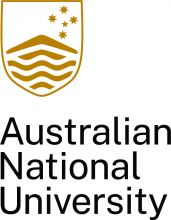A major review of Australia’s university system has been urged to redesign post-secondary education in its entirety, with stakeholders of all stripes proposing mechanisms to eliminate roadblocks between vocational and higher education.
The Independent Tertiary Education Council Australia (Iteca), which represents non-government-run colleges, says the funding models for skills training and higher education should be combined. “This would enable students to study in either system without the need to access different funding and loan programmes,” the council explains in a submission to the Universities Accord.
“The Australian government must radically rethink its approach to post-secondary education and abandon the siloed approach of the past. Every policy decision must be viewed through the prism of how it will affect both higher education and skills training,” it says.
Iteca also recommends “convergence” of the higher education regulator Teqsa and its training counterpart, Asqa, to reduce the compliance workload of institutions that report to both bodies. This would require harmonisation of standards in areas such as corporate governance, accountability, facilities, staffing and student complaints.
Although the council is “not proposing a joint audit process”, it says the two agencies might no longer find it necessary to separately audit the same institutions once they have more “confidence” in each other’s operations.
Australian National University vice-chancellor Brian Schmidt has gone a step further, calling for the establishment of a single regulator “to enable inter-operability” between the two systems.
In a personal submission to the accord, Professor Schmidt also advocates a “single mechanism” of government subsidies and income-contingent loans to cover tuition fees in both sectors. He says “substantial friction” impedes vocational students from moving into higher education, and vice-versa: “[This] creates barriers for appropriate courses suitable for people who need to upskill later in life.”
Similar proposals from Universities Australia, the Group of Eight (Go8), the Australian Technology Network, the Regional Universities Network and Independent Higher Education Australia highlight a widespread appetite for better integration of vocational and higher education, a long-standing aspiration that is considered unfinished business from Denise Bradley’s 2008 review of higher education.
Professor Bradley, whose review led to the establishment of Teqsa, wanted the regulator to “cover the whole of tertiary education and training” and replace the “complex, fragmented and inefficient” arrangements that prevailed at the time.
In a nod to the Bradley report, the accord’s terms of reference include “greater engagement and alignment” between vocational and higher education. This is no small ambition, with the states and territories sharing oversight responsibilities for both sectors with Canberra – meaning that integration of the two systems requires approval from eight governments.
Further complicating matters, the two systems are of vastly different scale. Vocational education has about 4,080 registered providers, compared with just 240 in higher education, making regulation of training colleges a far more challenging prospect.
Inadequate oversight in the past enabled widespread defrauding of government subsidies for vocational courses, culminating in Vet Fee-Help loan scheme scams estimated to have cost taxpayers up to A$4.6 billion (£2.5 billion).
Professor Schmidt acknowledged such risks in his submission. “Special care will need to be taken in regulating non-public entities such as for-profit providers,” it says.
The Go8 submission says an integrated tertiary sector should come with an attainment target expressed in “tertiary education qualifications” rather than degrees. It suggests a target of 75 per cent of Australian 25 to 39 year-olds possessing post-school qualifications by 2040.
Register to continue
Why register?
- Registration is free and only takes a moment
- Once registered, you can read 3 articles a month
- Sign up for our newsletter
Subscribe
Or subscribe for unlimited access to:
- Unlimited access to news, views, insights & reviews
- Digital editions
- Digital access to THE’s university and college rankings analysis
Already registered or a current subscriber? Login










